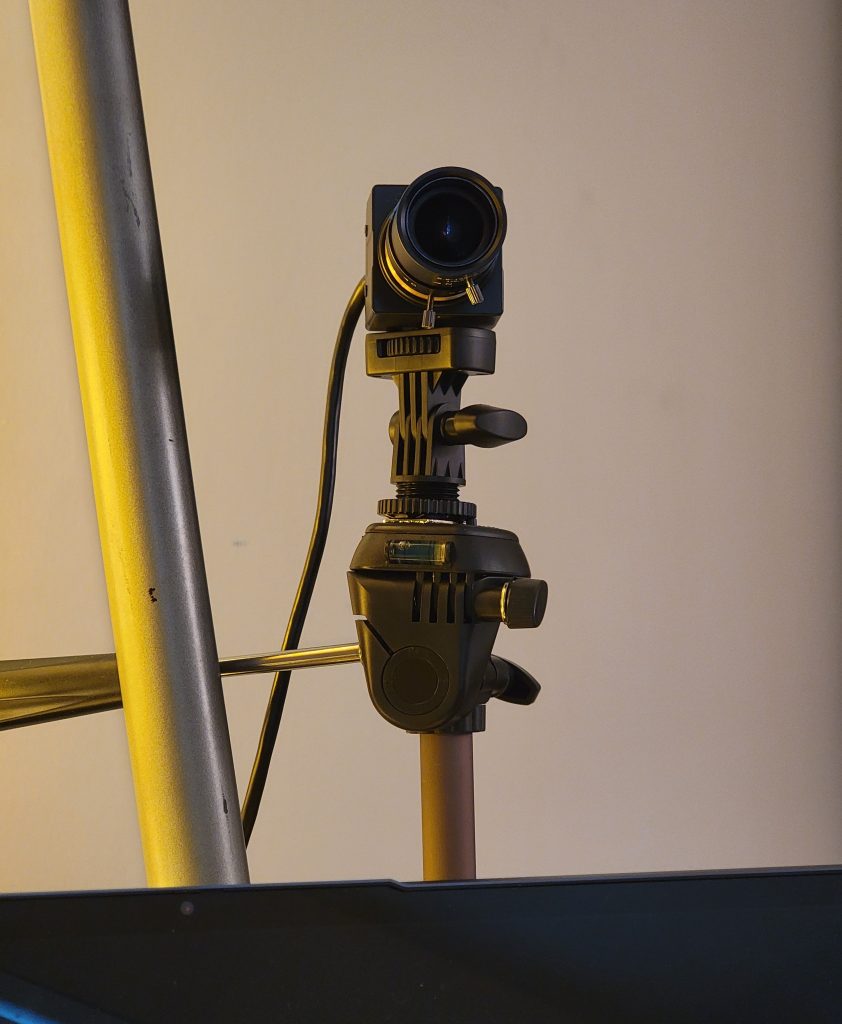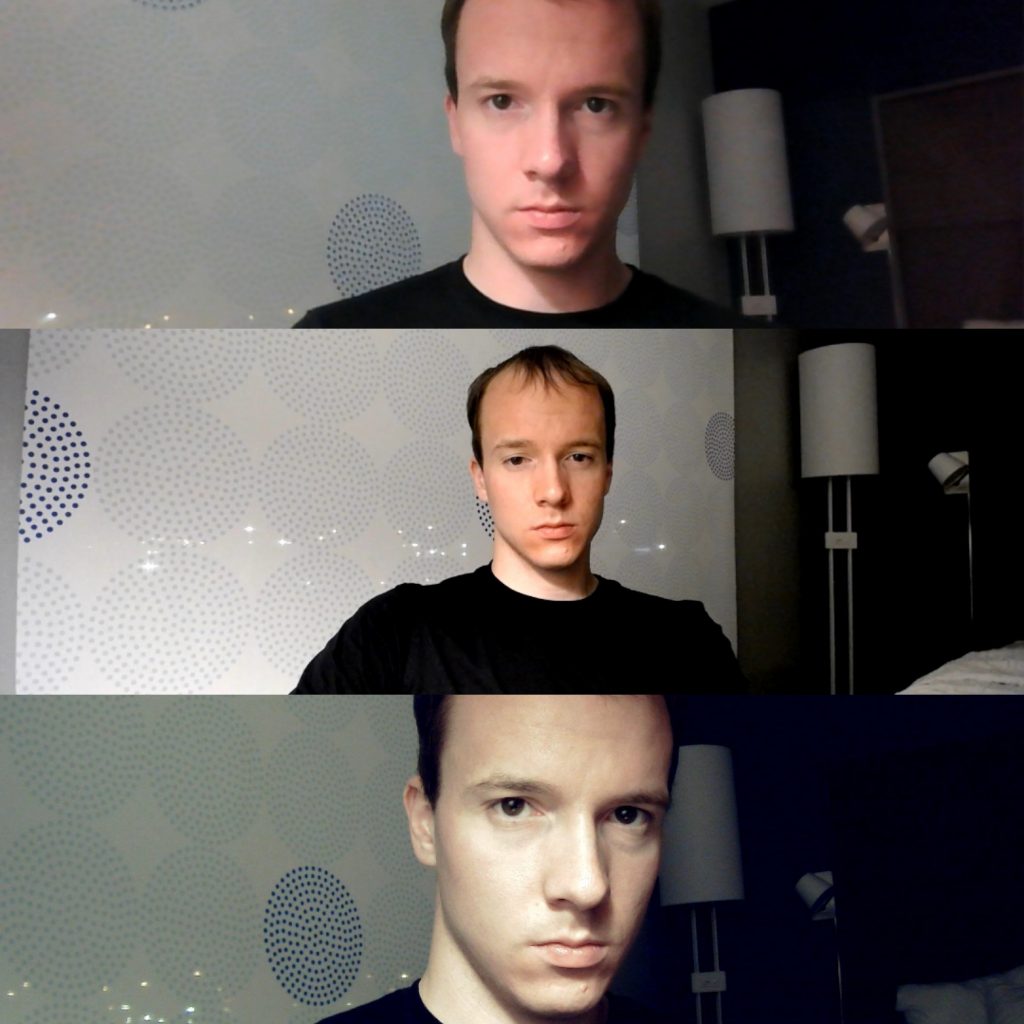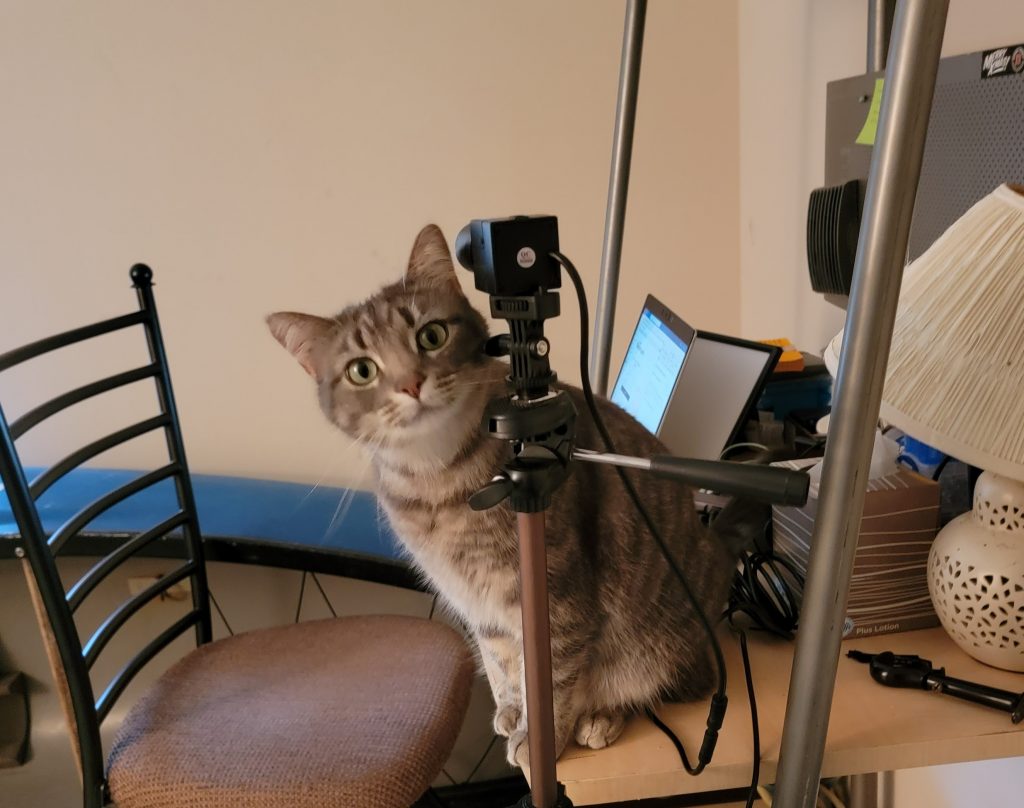One of my coworkers had setup a nice webcam, and looking at it, I thought, wow, that makes a big difference. In the world of working fully remotely, it seems like something worth having myself. I have been relying on built in webcams for ages, and it works, but it could be much better!
I was just going into a job search which was to be entirely online interviews. This job search went amazingly, landing me 5 offers in a short period of time. There are plenty of reasons for that (good job market, me having more experience, etc) but the webcam setup I found through all of this was, I think, almost certainly part. It’s the online equivalent of dressing well, I literally looked sharper, and that is definitely a good thing in an interview.
Content warning, terrible photos of my face are included below. Be prepared to be horrified.
Said coworker above had a DSLR setup, but that is not quite portable enough for me. I stumbled around online reviews, which are a chaotic mix of pros and cons. One thing was clear: Logitech webcams are the standard all else is compared to. The C930e looked good to me. Then I stumbled upon something else: USB cameras.
I was aware of C or CS mount lens from the Raspberry Pi world, and thought, wouldn’t it be cool if there was some way to use one of those. Sure enough, there are plenty of USB cameras that work with these lens. They offer better sensors, better lenses, and nice all metal construction for a great price. The only problem? No auto focus. That would probably be a deal breaker for anyone who wants plug-and-play, but for just sitting on a desk, it isn’t that bad. You focus once on where you are sitting, and then are good to go.
Meanwhile, I’m also reading and seeing comments to the effect, “it is half the camera, and half the lighting.” This seemed true to me, so I invested in a simple panel LED. It has a tripod mount, but being about the size of a tablet, I just used a tablet stand for it.
Raleno LED panel: $60
Logitech C930e (Amazon Renewed): $73 (price has since gone down $5)
USB Camera: $74 (this one, but there are plenty of similar ones)
Choosing the image sensor for the USB camera was a bit of challenge, since there are so many choices. I liked Sony, as I trust their brand. High megapixels sound good, but for webcams, anything above 2 mp rarely makes much difference (it’s HD) and there’s a lot more going on that just megapixels that matter to quality. Some research suggested the IMX322 had good capabilities in various lights. It was also the only one offering H264 video compression, which seemed a good thing to have.

I was quite impressed with the USB camera as soon as it came. Solid metal construction, and a much more serious look than the generic business looking webcam, which was all plastic.
In use, the Logitech and built in camera on my Lenovo laptop both tended to make my face very red, which I did not like. It looks too red already, much of the time, in my opinion. Using the LED panel adjustable color temperature (blue <-> yellow) counteracted that with blue light, but without that I did not like the look of either. Both the Logitech and USB cameras were great in resolution compared to the absolutely terrible (but still fully functional) built in camera.
One thing about the USB camera is that the relatively massive lens has a much greater zoom. Well, it’s the only with an optical lens for starters, but by default it has a tighter image than the others, not a wide field of view. But being a c/cs mount lens, it can be swapped with different lenses. Want a massive field of view? Get a fisheye lens and throw it on.

The Logitech camera has controlling software that allows adjustment, while the lens of the USB camera has zoom, focus, and aperture settings. It makes them a bit hard to compare side by side. I made a comparison photo shoot, but looking at the results doesn’t really show much advantage between any of them. I feel the nicer webcams make the most difference in the eyes – turning them from fuzzy black dots into distinctly eyes, with color and shine. Subconsciously, I think that makes a huge difference to viewers.
My conclusion is that for anyone who likes to tinker and likes photography a little, the usb camera will be much more satisfying. For the general crowd, however, a decent Logitech webcam is the right choice.
As cool as the webcams are, if I were to only get one thing, I would probably get the panel light. It makes all of the camera look much better, focusing light on my face. One of the greatest problems of the built in camera, after poor resolution, is difficulty with any sort of bad lighting. The panel light fixes that. While I tried doing something similar before (for free) by just moving around lamps on my desk, the panel light has broad smooth light that reduces shadows, and the adjustable brightness and color/warmth make it well worth the expense.

In my previous round of interviews last year, I had some interviewers complaining a bit about video quality in my backlit room. No positive comments about my video this time around, but also no negative comments. And plenty of job offers, which means it did the job well enough. A less cluttered background would probably help, but my options are not infinite…

